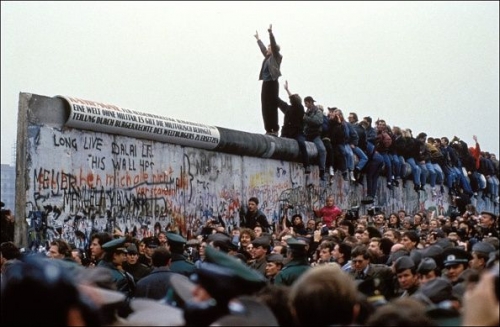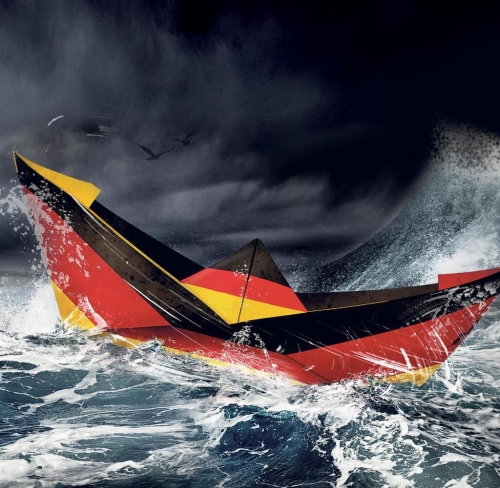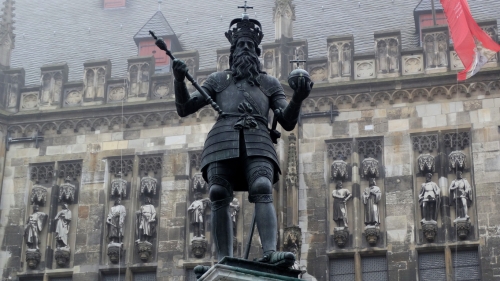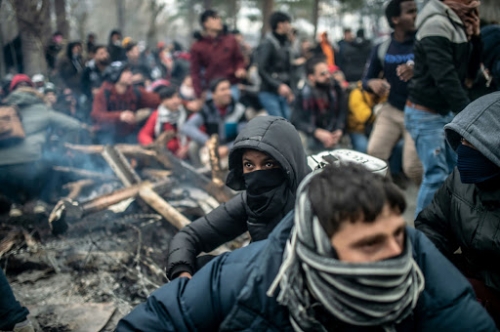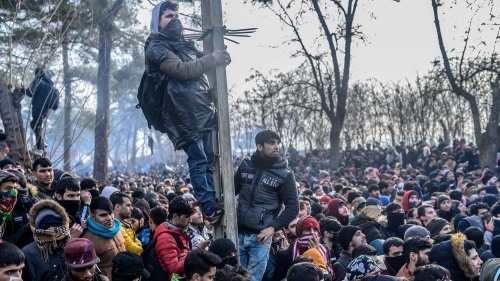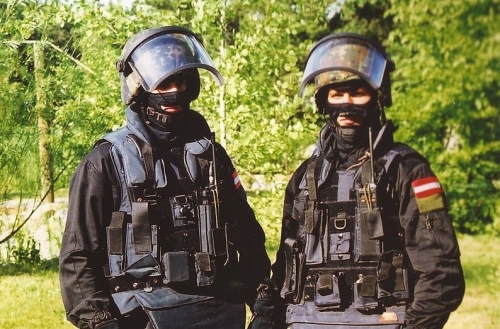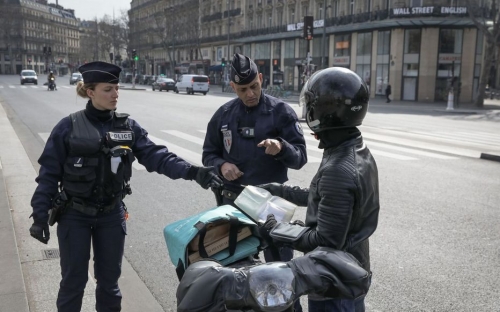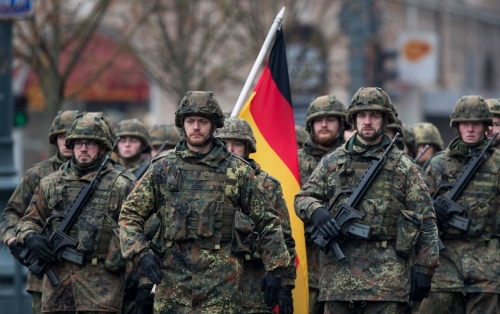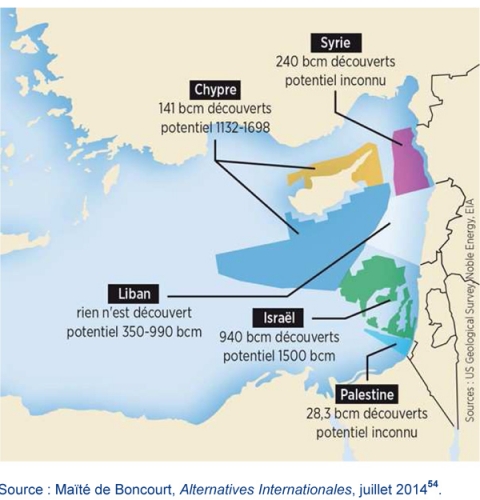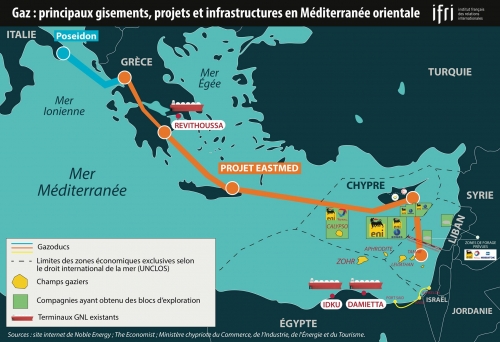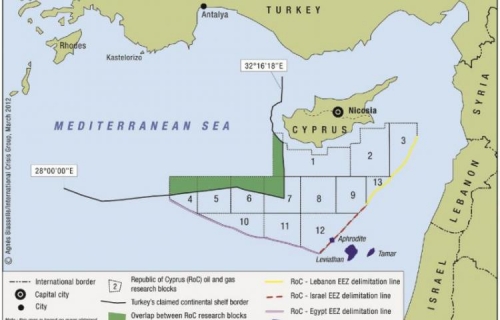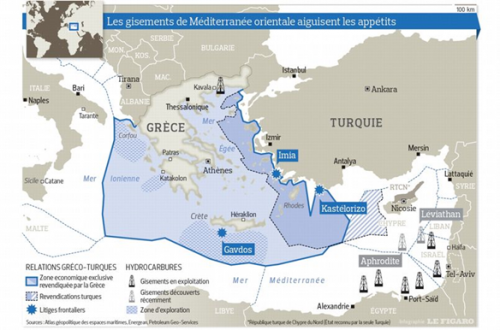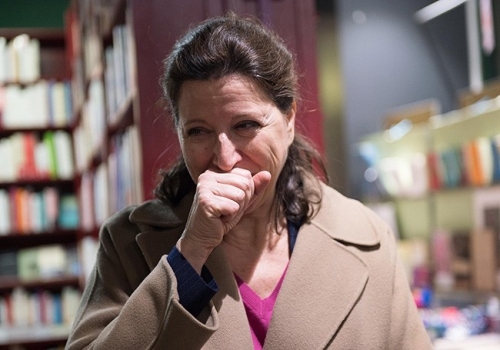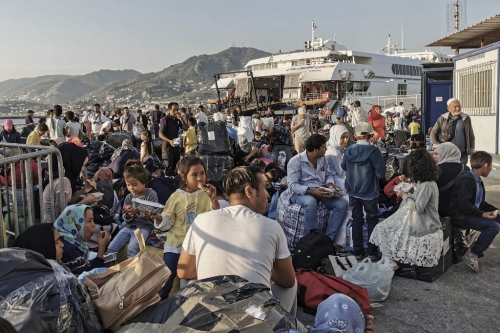Au cœur d’une crise mondiale inédite par son ampleur, Strategika vous propose l’éclairage d’analystes et de penseurs reconnus dans leur domaine d’expertise. Nous avons posé à chacun une série de questions qui portent sur les différents aspects de cette véritable crise de civilisation ainsi que sur ses répercussions politiques, géopolitiques et sociales.
Nous poursuivons cette série d’entretiens avec Pierre Le Vigan
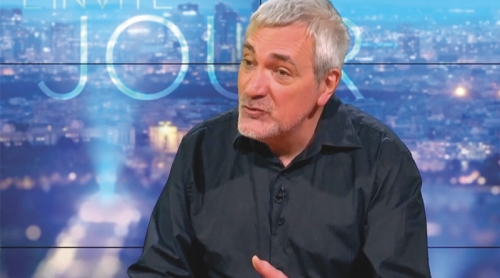
Pierre Le Vigan est urbaniste. DESS d’urbanisme, DEA de l’EHESS, CEA d’école d’architecture, maitrise d’AES, licence d’histoire, DESU de psychopathologie, licence de philosophie. Collaborateur de nombreuses revues depuis des décennies, il a donné des cours (économie, droit public, politiques urbaines) aux universités d’Orsay, Créteil et Bobigny–Villetaneuse. Il a publié quelque 800 articles sur des sujets de sciences humaines et une quinzaine de livres. Ses derniers ouvrages sont Le malaise est dans l’homme, Ecrire contre la modernité, La banlieue contre la ville, Soudain la postmodernité, Métamorphoses de la ville (édition revue et augmentée en mars 2020), Achever le nihilisme (Sigest, 2020), Le grand empêchement. Comment le libéralisme entrave les peuples (ed. Perspectives Libres/Cercle Aristote), Avez-vous compris les philosophes ? 3 volumes parus (éditions la barque d’or). Ses livres ont été salués pour leur finesse, leur profondeur de vue, et leur rigueur.
Strategika – On lit beaucoup d’éléments contradictoires selon les différentes sources d’information disponibles ou selon les avis des professionnels de la santé. Quelle est la réalité effective de cette pandémie selon vous ?
Merci à votre société de pensée de mener cette enquête, nécessaire pour y voir clair. L’obscurcissement des enjeux est en effet un élément de la guerre idéologique – et cette guerre est menée, n’en doutons pas, par le pouvoir.
On parle de pandémie à propos du Covid-19 parce que c’est une épidémie de masse, mondiale. Elle est tout simplement mondiale parce que nous vivons dans un monde… mondialisé. Plus de 3 % de la population mondiale émigre chaque année, et ce pourcentage est en augmentation depuis des décennies. En France, près de 400 000 immigrés (nous ne parlons que des légaux) s‘installent tous les ans, la plupart durablement, voire définitivement, et en y fondant une famille ou en en faisant venir une. Mais il n’y a pas que l’immigration. Il y a le tourisme.
Le nombre de touristes a doublé en 30 ans et représente environ 900 millions de personnes, soit 12 % de la population mondiale. 12 % de la population mondiale qui fait des voyages internationaux. Nous ne parlons pas de voyages de Romorantin à Vendôme… Ainsi, la France a accueilli en 2018 le chiffre délirant de prés de 90 millions de visiteurs étrangers, plus que sa population (69 millions). Le tourisme devient le contraire du voyage. Il devient la prostitution généralisée des lieux d’histoire, de culture, de culte, d’identité. Le tourisme « disneylandise » le monde. Il le muséifie. Il le réifie. Il participe au système à tuer les peuples. Il amène à ce que Rodolphe Christin appelle « l’usure du monde ».
Bien sûr, il ne faut pas supprimer l’hospitalité, qu’elle concerne le tourisme ou l’immigration, mais il faut qu’elle soit choisie par les accueillants, et sans culpabilisation aucune en cas de refus de leur part. Il faut rompre avec la logique de ce que Crawford Brough Macpherson a appelé dès 1962 « l’individualisme possessif ». C’est cet individualisme de propriétaire qui fait que nous raisonnons en termes de « porteur de droits », que nous emmenons partout avec nous, alors qu’il s’agit, dans une société saine, d’élaborer en commun, sur un territoire donné, le droit qui s’impose à tous. Rompre avec l’individualisme possessif, c’est considérer que l’individu n’est pas propriétaire de lui-même, qu’il n’est justement pas un individu, mais un membre d’une communauté politique qui l’oblige et en même temps lui fait une place. C’est cette rupture qui est nécessaire. Une rupture avec la vision du monde individualiste.
Compte tenu de cette « touristisation » du monde, encore plus importante que les migrations, le virus Covid-19 se répand facilement partout. Certes, il y avait dèjà des épidémies au Moyen Age, et d’ampleur européenne (la Grande Peste dite Peste noire de 1346-52), une Europe où on voyageait, ce qu’on oublie trop souvent, mais l’ampleur de la propagation du virus est maintenant multipliée par la vitesse et l’ampleur des déplacements actuels. De continentale, une épidémie devient vite mondiale avec les voyages en avion et les transports massifs de marchandises, et c’est alors une pandémie.
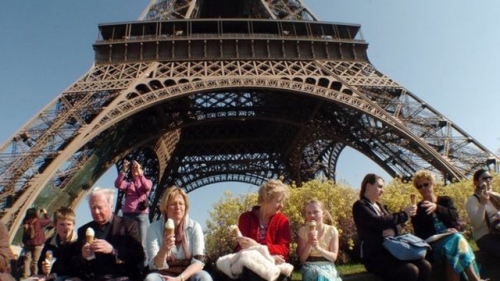
Quant à son degré de gravité, on peut voir les choses sous des angles qui le font apparaitre très différemment. Le 2 avril, on comptait 45 000 morts dans le monde (35 000 le 30 mars, ce qui montre une progression rapide mais qui est en fait très différenciée). Localement, il y a des disparités : des pays où l’épidémie régresse (Chine), d’autres où elle progresse (France, Italie, Espagne, quoique l’Italie semble proche du point d’inflexion, à confirmer). Pour une population de près de 8 milliards d’habitants, c’est très peu (mais nous n’en sommes pas au bout), sachant que tous les ans, quelques 60 millions de personnes décèdent dans le monde (toutes causes confondues).
En France, nous en sommes à 4 000 morts le 2 avril (3000 le 30 mars). Sur 600 000 décès annuel, dans un pays de 69 millions d’habitants, c’est 0,5 % de la mortalité normale. Moins que le nombre de morts d’accidents de la route (environ 4 500).
Voyons les choses d’une autre façon. Regardons l’Italie. Le nombre de morts y a dépassé celui de la Chine. Et nous sommes dans un pays de 60 millions d’habitants, et pas 1,4 milliard comme la Chine. Mais le plus inquiétant n’est pas là. L’inquiétant est la tendance : 1000 morts par jour le 27 mars, et le nombre de mort, depuis février, a doublé tous les 3 jours. Même en restant à 1000 morts par jour, si cela durait, nous aurions en Italie 365 000 morts de plus par an, soit 1 000 000 morts au lieu de 650 000. Vu sous cet angle, l’épidémie apparait très inquiétante. Donc, deux angles de vue existent. A l’échelle de la planète, le problème parait un problème parmi d’autres, et un des plus mineurs. A l’échelle de nos pays européens à la démographie faible, voire négative, et vieillissante, le problème apparait considérable. Entre ces deux visions laquelle choisir ? La moins catastrophique s’impose.
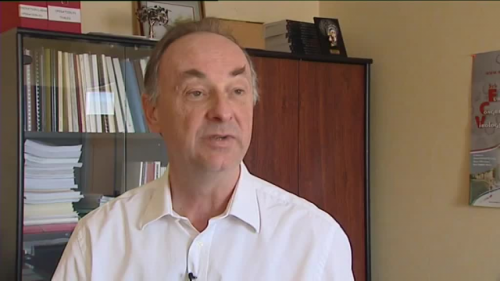
Dr. Bruno Lina
Le virologue Bruno Lina explique : “Les tailles moyennes [il veut parler des durées] des épidémies sont de deux à trois mois”. Mais il précise qu’il “peut y avoir plusieurs vagues”. En 1920, avec la grippe espagnole, il faut savoir que c’est la 2e vague qui fut la plus meurtrière. Comment allons-nous en sortir ? Par une régulation naturelle, disent la plupart des épidémiologistes. “Il va y avoir des infectés, ils vont guérir et devenir immunisés. Cette immunité va freiner la diffusion du virus, voire arrêter l’épidémie si elle est couplée à des mesures d’hygiène et des mesures barrières.” (Bruno Lina, 4 mars 2020). De fait, il y a deux façons d’être immunisé : l’une est d’avoir contracté le virus et d’en être guéri, l’autre est d’être vacciné, ce qui ne concerne pour l’instant personne en France, le vaccin n’étant qu’à l’étude. C’est bien pour cela que certains Etats (la Grande- Bretagne) ont opté dans un premier temps pour une immunisation collective, c’est-à-dire pour ne rien faire, avant de se rallier à des mesures de distanciation sociale limitant le choc de la propagation du virus.
Vaccin ou guérison. Tel est donc l’alternative officielle. Bien entendu tout le monde ne va pas guérir : 97 à 98 % des détectés positifs détectés au Covid-19 guérissent. Pas les autres. Et bien sûr le pourcentage de ceux qui ne guérissent pas est beaucoup fois plus grand chez les personnes âgées et chez les malades, que chez les moins de 60 ans. Il faut donc prendre cette épidémie très au sérieux, mais bien voir que ce n’est sans doute pas le problème majeur de la santé publique, par rapport au cannabis (5 millions de consommateurs en France, dont 700 000 usagers quotidiens), voire par rapport aux usages toxicomaniaques de cartouches de gaz (on trouve dans chaque rue de banlieues populaires des dizaines de cartouches par terre qui indiquent le développement de cette drogue comme une trainée de poudre), par rapport aux cancers dus à la mal bouffe et au stress de la vie moderne, « cet univers de camelote qui est le monde moderne » (Drieu La Rochelle), etc. Bref, par rapport à toutes les autres causes de fragilité de la santé.
* * *
Evidemment, la fin de l’épidémie peut être facilitée ou retardée en fonction de notre comportement collectif. Le non rapprochement évite, ou limite, les risques de transmission du virus. Reste à savoir si le maintien de distances entre les gens nécessite le confinement tel qu’il est pratiqué. D’autres pays ont compris que la nécessaire distanciation sociale n’est pas la même chose que le confinement.
On peut remarquer plusieurs incohérences dans le confinement strict et sans nuance tel qu’il est édicté et, plus ou moins pratiqué chez nous. Le vélo est interdit pour l’activité « exercice physique », admise dans le formulaire d’auto-dérogation de sortie. Or, il ne peut pas se pratiquer en étant collé l’un à l’autre. Le vélo implique une distance d’au moins un mètre – qui suffit à se protéger mutuellement. Le vélo implique donc la distanciation sociale. De même, les promenades en forêt, ou sur le bord des fleuves sont interdites. Or, si les promenades en groupe, et les pique niques collés sont évidemment à éviter, une promenade dans un endroit aéré en gardant une distance d’un mètre ne présente pas de danger. A fortiori une promenade solitaire… qui est pourtant interdite.
Par ailleurs, le confinement amène d’autres pathologies, collectives et personnelles, ou les aggravent, et devrait être mis en perspective et en balance avec celles-ci. On observe l’augmentation des violences conjugales. Quand un couple tient parce qu’on se voit peu, comment résister en période de confinement ?

Il y a aussi les conséquences sociales. Un exemple : dans l’Aisne, on compte 31 morts (30 mars) et, dans le même temps, un millier de demandes de chômage partiel qui concernent 10 000 salariés. Derrière cela, et partout ailleurs, des angoisses, des dépressions, voire des suicides. Dans ce même département, le préfet avait envisagé, avant de reculer, d’interdire la vente d’alcool. Dans une petite ville du midi (Var), un maire interdit… tout déplacement à plus de 10 mètres du domicile. Il interdit la vente de baguette à l’unité. Il faut en acheter plusieurs à la fois, de façon à ne sortir qu’une fois ou deux par semaine (il a dû revenir sur cette mesure). Une véritable hystérie s’empare de certains élus et fonctionnaires tandis que, dans le même temps, des consignes de souplesse dans l’application du confinement sont données pour les « quartiers sensibles » des banlieues. Quartiers dans lesquelles agressions de pompiers et de policiers se poursuivent.
Chacun sait que, plutôt que un confinement de tous, un confinement des personnes à risques (personnes âgées, et porteurs de virus) aurait été moins déstabilisant pour la société tout entière. Mais cela eu nécessité que nous ayons des tests en quantité. La rigueur uniforme et absurde du confinement (l’interdiction de se promener même seul en forêt ou au bord d‘un fleuve est emblématique) est stupide, mais elle est surtout proportionnelle à l’imprévoyance de nos dirigeants, et, en conséquence, au manque de masques, de tests, de respirateurs.
Didier Raoult, de l’IHU de Marseille – La Timone, propose justement de multiplier les tests de dépistage. Il y a et il y eut à l’évidence une rivalité, et de probables conflits d’intérêts, entre des institutions centrales, liées au pouvoir macronien, avec Agnès Buzyn, son mari Yves Lévy (directeur de l’Inserm jusqu’en 2019), et le « cousin de province », selon l’expression de Michel Onfray, qu’est Didier Raoult. En même temps, il faut souligner qu’il peut y avoir des questions scientifiques débattues de bonne foi sur les effets secondaires de la chloroquine (dite encore cloroquinine), molécule qui, certes, existe et est administrée depuis 40 ans, mais comme traitement contre le paludisme, non contre le Covid-19 (on désigne par ce mot la maladie du coronavirus). Est-ce cela qui guide les pouvoirs publics ? Leur préoccupation principale n’est-elle pas de faire de ce virus une occasion de profits, ce que ne permettrait pas l’hydroxychloroquine, associée à un antibiotique, proposée par le professeur Raoult, avec des résultats, d’après ce qui nous est communiqué, très supérieurs à tous les autres traitements ? Un autre traitement ? Un vaccin ? Sur lequel on aura de toute façon beaucoup moins de recul que sur la chloroquine ? Pour quoi faire, sinon pour faire des profits privés sur le dos de la Sécurité sociale, c’est-à-dire sur le dos des Français ?
En fait, le Covid-19 montre l’état déficient de notre système de santé. Nous manquons de lits de soins intensifs. Nous en avons 4 fois moins que les Allemands. Nous manquons de masques. Nous en produisons 8 millions par semaine. Taiwan, petit pays de 23 millions d’habitants, en a produit 10 millions par jour. Notre désindustrialisation se paie au prix fort. Notre économie externalisée montre sa faiblesse ; La France 6e puissance économique mondiale ? C’est en fait un village Potemkine. Le roi est nu. Nous dépendons de l’étranger pour tout, et surtout pour nos médicaments. C’est le virus du libéralisme qui permet la propagation du Covid-19. Cela amène à redéfinir le souverainisme. Un souverainisme purement juridique ne servirait à rien. Il n’y a de vraie souveraineté qu’avec une autonomie économique, avec une certaine capacité d’autarcie. C’est désormais la question majeure qui se pose.
Il faut souligner d’autres aspects, non pas du virus lui-même, mais de la réponse apportée à la pandémie. A savoir le confinement. Cela soulève des questions philosophiques et anthropologiques. Il y a d’autres moyens que le confinement pour connaitre les vertus de la « demeure », selon l’expression de François–Xavier Bellamy (c’est le sujet de son beau livre éponyme). Le confinement rajoute du non-sens à une vie urbaine déjà largement dénuée de sens : « un monde, dit Lewis Mumford, qui de plus en plus échappe au contrôle des hommes, et qui, pour l’humanité, a de moins en moins de sens. » C’est un mode contrôlé, digitalisé par des processus technologiques mis en place par des instances de contrôle social total. “Grâce à cette nouvelle ‘mégatechnologie’, la minorité dominante créera une structure uniforme, supraplanétaire » ? disait déjà Lewis Mumford (Le mythe de la machine, 1967). Préscience d’un gouvernement mondial.
Ce n’est pas être complotiste (encore que, sachons-le, de vrais complots existent) que de constater que les gouvernements, et le nôtre en tête, tirent parti d’une crise qu’il n’ont pas su ou pas voulu anticiper pour faire avancer l’idée de règles mondiales, c’est-à-dire pour renforcer le pouvoir de la superclasse mondialiste, affairiste et ploutocratique (rappelons que cela veut dire tout simplement pouvoir de l’argent, gouvernement des plus riches). En vérité, il est sidérant de voir à quel point des privations essentielles de libertés sont passées avec fort peu de résistances. Dans une « société » (à défaut de dire une nation, car sommes-nous encore une nation ?) dans laquelle le libéralisme a voulu nous libérer de toute contrainte, quand une certaine discipline est nécessaire – et elle l’est avec ce virus – il n’y a plus d’autre solution que la privation des libertés les plus élémentaires. Que beaucoup se résignent à une telle privation de libertés est très inquiétant. D’autant que cela s’accompagne d’un contrôle social, d’un traçage des faits, gestes et déplacement qui est tout simplement un totalitarisme accompli. Quel Albert Camus nous en dira le haut le cœur ressenti par tout honnête homme ?
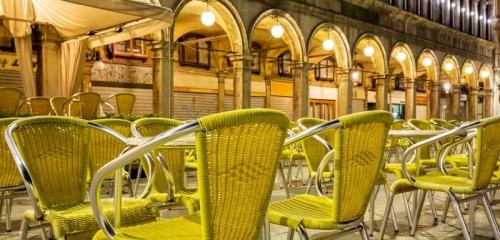
Dans le même temps, des camionnettes passent dans les rues, appelant au confinement, avec des mots d’ordre en langue de bois : gestes barrière, etc. Un conditionnement social s’installe avec une force inouïe : c’est « une journée particulière » comme celle d’Ettore Scola, mais étendue à des semaines et à des mois. Face au virus, il nous faut croire qu’ « il n’y a qu’une seule politique possible ». De même, face à la destruction du monde par le capitalisme et le productivisme, il nous faut croire qu’il n’y a qu’une analyse possible, la théorie officielle du réchauffement climatique édictée par le GIEC, organisme intergouvernemental, et une seule réponse possible, le « développement durable », doctrine officielle de toutes les grandes métropoles et de tous les ministères. Et il nous faut fermer les yeux sur tout ce qui relève de la destruction de la terre sans relever forcément du réchauffement climatique.

Lewis Mumford écrivait encore, il y a 50 ans : « La société des grandes métropoles est particulièrement bien outillée pour éliminer les initiatives spontanées et l’indépendance de l’esprit…Par l’antenne de la radio et de la télévision, un très petits nombre d’individus interprètent à notre place, avec une adresse toute professionnelle, les mouvements d’opinion et les événements quotidiens. Ainsi les occupations les plus naturelles, les actes les plus spontanés sont l’objet d’une surveillance professionnelle et soumis à un contrôle centralisé. Des moyens de diffusion, aussi puissants que variés, donnent aux plus éphémères et aux plus médiocres ouvrages un éclat et une résonance qui dépassent de loin leurs mérites. » (La cité à travers l’histoire, 1966). Le contrôle social a fait depuis des « progrès » énormes. Il les a faits par l’extension continue de la ville capitaliste, et de l’Etat tentaculaire à son service. Un véritable processus de sidération collective est en place, avec les médias télévisuels en boucle (et le faible nombre de kiosque à journaux). De plus en plus de gens vivent dans un monde de plus en plus artificiel, « un monde de murs vitrés, de plexiglass, de cellophane, qui les isole de leur peine et des mortifications de la vie, – monde d’illusionnistes professionnels entourés de leurs dupes crédules », écrit encore Lewis Mumford.
* * *
On nous dit que le confinement est nécessaire pour sauver des vies. Non, la vie n’est pas la valeur suprême, la valeur suprême, c’est la vie libre qui est la valeur suprême. C’est cela qui fait que les Espagnols ont résisté à Napoléon en 1808, c’est cela qui fait qu’il y a eu des Résistants, ou des gens qui ont risqué leur peau, dans un camp ou dans un autre, à toutes les époques, pour leurs idées, ou pour une certaine conception qu’ils avaient de l’honneur, etc. Or, la facilité avec laquelle les libertés les plus élémentaires ont été supprimées laisse pantois. Ces libertés seront-elles toutes rétablies après la crise du coronavirus ? Ce n’est pas du tout certain. L’état d’urgence (un mot bien facile), ici l’urgence sanitaire, l’état d’exception peut être appliqué à bien d’autres domaines. En outre, on constate que le confinement est proportionnel à l’impuissance et à l’imprévoyance de notre Etat. En Allemagne, pays moins imprévoyant, il n’y a pas de confinement. Il y a simplement une interdiction de sortir à plus de deux. C’est la distanciation sociale. Il est possible de voyager, d’aller d’une vile à une autre. Nous sommes à mille lieux de la situation française.
Nous avons donc les inconvénients d’une société policière, alors que nous avons depuis des décennies tous les inconvénients d’une société ouverte. La cause en est que, en dernière instance, ce qui détermine les choix de nos dirigeants, c’est le profit, c’est la course en avant dite « croissance », c’est la mondialisation spatiale – dont la limite sera la consommation de toute la terre et de toutes ses ressources – et la marchandisation de toutes les tranches de la vie de l’homme, avec la numérisation intégrale de nos vies.
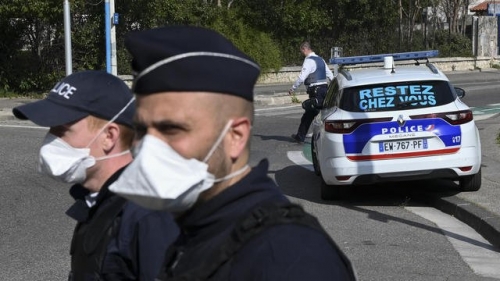
Si certains voient des vertus au confinement, je n’en vois guère. Le confinement permettrait le retour à soi ? Voire. Le confinement n’est pas forcément l’isolement. Il peut même être son contraire : il peut être l’entassement dans un petit logement. Et il y n’y a jamais eu besoin de confinement, en clair, d’assignation à résidence, pour trouver la solitude. « Qui cherche l’exil le trouve », disait Montherlant.
Le confinement, c’est, par contre, une accoutumance à l’emprisonnement et à la domestication de l’homme. Chacun s’autorise à sortir dans certaines conditions. Chacun devient le gardien de soi-même en attendant d’être peut-être le délateur de ses voisins. Il y a bien sûr une discipline à observer et des précautions à prendre, pour soi et pour les autres. Mais il y a quelque chose de profondément malsain dans la situation actuelle. Il y a un évident abus de pouvoir de l’Etat. Il y a, normalement, trois instances anthropologiques de régulation d’une société : le commun, le public, l’étatique. Le commun n’est pas forcément le public, et le public n’est pas forcément l’Etat. Or, avec le libéralisme et l’individualisme qui va avec, le commun n’a plus de place, et le public est de plus en plus démantelé. Quand il subsiste, il est entièrement asservi à l’Etat, c’est-à-dire à ses hauts fonctionnaires, eux-mêmes très liés au monde économique et volontaires pour en rajouter dans tous les crétinismes à la mode (telle l’écriture inclusive, qui aurait bien fait rire Jean de la Fontaine). Sous couvert d’expertise c’est l’argent, c’est la profitabilité qui est souvent l’arbitre. Nous en sommes au point où le libéralisme entraine l’étatisme, et le pire de celui-ci.
En outre, la nouvelle phase du libéralisme est anti-conservatrice, elle ne s’appuie plus sur l’idée d’un ordre naturel – ce qu’elle faisait auparavant d’une manière abusive en réduisant la nature de l’homme à la recherche de son intérêt –, mais elle prétend désormais que la nature de l’homme, c’est de ne pas en avoir, c’est la plasticité absolue. Qu’est-ce que l’homme du point de vue libéral ? Un matériau façonnable à merci, interchangeable sans limite, substituable facilement par un autre homme. Ou par une « intelligence » artificielle. Un robot. Et quand cette plasticité absolue ne se constate pas, le libéralisme l’impose. C’est cela le « néo » libéralisme : le projet d’imposer un homme nouveau, au-delà des peuples, au-delà des races, au-delà des catégories du masculin et du féminin. Un homme digitalisé, au-delà même de l’humain. La manipulation des mots est un des aspects de ce projet totalitaire : Macron, dans un de ses discours répète six fois « nous sommes en guerre ». La fausseté de ce propos est totale. Un virus, un cancer, une maladie n’est pas une guerre. C’est un drame, c’est tragique, comme bien des choses dans la vie, mais tout drame n’est pas une guerre. « Le vocabulaire de guerre laisse entendre ‘’silence dans les rangs’’ », souligne Jean-Luc Mélenchon. Or, « le covid-19 n’est pas un ennemi, c’est juste un virus », dit-il avec justesse.
Mais depuis Sarkozy et Hollande, nos présidents ne savent plus ce qu’est une guerre, comme Chirac le savait, comme Giscard le savait, comme Chevènement le savait. Ils ne le savent plus – et personne ne songe à leur reprocher de ne pas les avoir vécues – mais ils ne le sentent pas non plus. Ils sont les complices, mais aussi les victimes d’un monde post-national. Nos dirigeants croient que l’échange marchand permet de sortir de l’histoire. Ils veulent un monde post-national, mais sont prêts à le faire accoucher au forceps. Guerre à la guerre, donc guerre aux nations. Mais le réel fait de la résistance. Les peuples ne veulent pas mourir. La France ne veut pas mourir.
Dés lors, les mots de M. Macron sont vides. Son verbiage souligne la désertion du sens. Mais le gouvernement ne perd pas de vue ses objectifs de toujours : démembrer l’Etat protecteur. Du reste, au même moment où M. Macron explique que, désormais, le marché ne doit pas imposer sa loi partout, un rapport de la CDC prône, sans originalité, comme solution aux problèmes de l’hôpital, sa… privatisation (Marianne, 2 avril 2020).
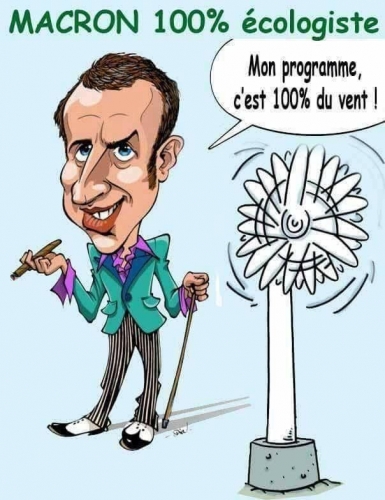
La crise sanitaire est l’occasion pour le gouvernement d’accentuer la domination de la société par l’expertocratie (dont je trace la genèse dans Le grand empêchement). Le gouvernement se réfugie, face au virus et à la nécessité de décider, derrière un Comité scientifique. Or, la science ne pense pas. Les scientifiques peuvent penser, mais ils ne sont pas là pour décider. La décision est un choix politique. En outre, les scientifiques ne sont pas tous d’accord entre eux, sur la nature d’une épidémie, sur sa portée, sur les traitements, et ils ne sont pas là pour édicter des priorités. Faut-il sauver en priorité un immigré sans papier qui n’a jamais cotisé, ou un vieux Français qui a cotisé toute sa vie ? S’il faut choisir – et il faut espérer que non, mais la réalité nous oblige à constater que des choix sont faits – ce choix est éminemment politique.
Bien entendu, on a pu remarquer que le confinement oblige certains à prendre du recul. « Nombreux sont les bourgeois qui fuient dans l’affairement leur vide intérieur », remarquait Finkielkraut. Et pour cela, le confinement peut être l’occasion d’une prise de distance par rapport au quotidien. Mais pour d’autres ? Pour des travailleurs immigrés hébergés dans un foyer, dans des chambres de 7 m2 ? Quelle est la qualité de leur confinement, moins confortable que celui de tel terroriste bénéficiant d’une salle de sport privative ?
Le confinement : moyen de se retrouver, de se « donner rendez-vous avec soi-même », comme dit Henri Michaux ? L’idée peut séduire les niais, ceux qui font l’impasse sur les réalités de classe. Mais quand une famille est confinée dans un HLM, comment cela peut-il être possible ? Comment l’enfant peut-il « être seul comme l’enfant est seul, quand les grandes personnes vont et viennent », comme le dit Rainer Maria Rilke, quand tous sont confinés dans un petit logement ? En outre, a-t-on remarqué que l’injonction de « bouger » perdure plus que jamais ? Le jooging est autorisé, mais la promenade est à peine tolérée. Il est interdit de s’asseoir sur un banc, même seul, même à 10 mètres de toute personne. Les policiers vous interpellent immédiatement : « Circulez », disent-ils. Il faut bouger, même sur place. Surtout sur place. En singeant le gouvernement. Même confiné, il faut remuer, se bouger. Le banlieusard est réduit à la triste fréquentation des centres commerciaux encore ouverts. Car quand on cherche les permanences de nos sociétés, ce qui demeure en période de confinement, on ne trouve plus qu’eux. « Dans le système capitaliste, la permanence n’a pas droit de cité, ou plutôt les seuls éléments stables qui s’y retrouvent de façon constante sont l’avarice, la cupidité et l’orgueilleuse volonté de puissance » (Lewis Mumford).
Des vérifications de sac de courses sont pratiquées, abusives, mais difficiles à contester ensuite, quand elles ont donné lieu à une verbalisation, de 135 €, soit une semaine de courses pour bien des familles populaires. Disons-le d’un mot : le confinement ne guérit pas nos pathologies sociales. Il les souligne. Ce confinement aboutit du reste à des situations ubuesques, mais surtout très inquiétantes. Des récidivistes du non-respect du confinement sont condamnés à de la prison ferme… alors que le ministère de la justice libère en masse des prisonniers de droit commun, sans parler des terroristes lâchés dans la nature, dont la libération était déjà programmée.
Strategika – Cette pandémie précède-t-elle un effondrement économique et systémique ?
Je crains que non. Les optimistes attendent trop des catastrophes. Et à l’échelle de l’histoire, c’est une toute petite catastrophe. De 1994 à 1999, on estime le nombre d’enfants irakiens morts du fait du blocus américain à 500 000. Il est vrai que « cela en valait la peine », disait Madeleine Albright. Ce qui est par contre très frappant, c’est l’effet idéologique de la crise sanitaire et donc économique. De même qu’en 2008, Nicolas Sarkozy avait expliqué que le capitalisme libéral et le tout marché, c’était fini, et que le temps était au retour de la puissance publique, de l’Etat, voire du Plan gaullien, sans que cela soit suivi d’effet, M. Macron nous a expliqué que rien ne serait plus comme avant, que l’on dépenserait « tout ce qu’il fallait sans compter », et que le tout marché, et la mondialisation de tout, c’était fini. « Déléguer notre alimentation, notre capacité à soigner à d’autres, c’est une folie ». Macron pour la relocalisation ? Macron pour la démondialisation ? Mais M. Macron est un homme de la finance et de la communication, mais il n’est que cela. Il est plus que probable que, de même qu’avec Sarkozy, nous n’avons pas vu d’actes suivre ces bonnes paroles, nous ne verrons pas non plus, avec M. Macron, d’actes suivre durablement ses propos. Tout à coup, on découvre que les 3 % de déficit public par rapport au PIB à ne pas dépasser, ne sont plus un critère, et que le rapport dette/PIB limité à 60 % n’est plus indispensable (nous en étions de toute façon à 100 %). Il est bien évident que le virus symbolise les faiblesses de la mondialisation et de la logique du marché. Soyons plus précis : il montre que nous abordons la mondialisation en telle position de faiblesse qu’elle fait de nous un pays vaincu. La mondialisation est le prétexte trouvé par nos « élites » pour, précisément, ne pas assumer leur rôle de protection du peuple, pour, précisément, s’enrichir au détriment du peuple, en se déconnectant de ce peuple, décidément encombrant et bien moisi.
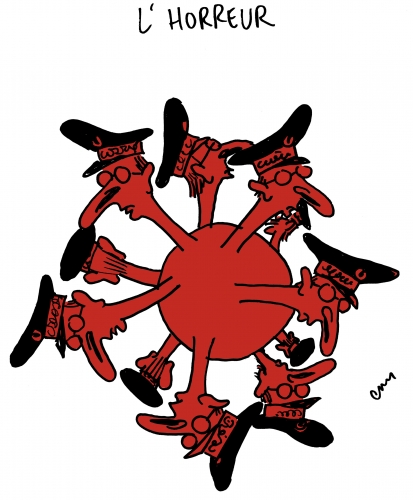
Dans un monde où tout circule, Il n’y a plus de petite crise localisée. Une épidémie locale peut vite devenir une pandémie. « Le virus n’a pas de passeport », dit M. Macron. La remarque est trompeuse. C’est parce que les porteurs de virus passent, touristes, immigrés, commerçants sans cesse les frontières que le virus se déploie aussi rapidement. On sait que, en Italie, un des principaux foyers du virus a été le secteur de la mode, dans lequel les Chinois sont très présents. Donc, il y a bien un effet idéologique du virus. Il affaiblit la doctrine de la globalisation et renforce le camp des partisans des frontières, et des partisans de la relocalisation, des partisans de l’enracinement contre ceux du nomadisme, des gens qui sont « de quelque part » contre ceux qui sont « de nulle part » (David Goodhart, Les deux clans. La nouvelle fracture mondiale, 2019).
Mais, après cette crise sanitaire, le libéralisme mondialisé reprendra sa marche en avant, qui est sans doute une marche à l’abime, vers toujours plus de concurrence, toujours plus de recherche de croissance. La perte d’emplois et de richesses sera néanmoins sans doute considérable pour certains pays et c’est tout un rapport de force mondial qui sera bouleversé. Il est possible que cela soit au bénéfice de la Chine car celle-ci, touchée la première, a réagi la première, et avec force. Mais il y a bien des incertitudes. Les épidémiologiques indiquent que dans une épidémie comme le Covid-19, il y aura une deuxième vague. Est-elle anticipée par les Chinois ? Et par nous ? La Chine est déjà la 2e économie du monde en nominal, et la première en parité de pouvoir d’achat (PPA – c’est-à-dire en corrigeant la sous-évaluation du yen), soit 16% du PIB mondial en nominal, 29 % en PPA. Devant les EUA. Il n’est pas impossible qu’elle prenne l’avantage, même en nominal.
Pour nous, Français, et pour nous, Européens, la crise sanitaire est une alerte. Elle nous montre que la voie que nous suivons, celle de la mondialisation sans frontières, et de la société ouverte à tout et à tous, est pleine de risques. Quant à la prétendue « Union européenne », elle ne sert à rien. L’Italie, la Serbie, bien d’autres pays reçoivent l’aide… de la Chine et de Cuba. Bien joué. Les pays européens concernés s’en souviendront. La structure parasitaire de Bruxelles ne leur a pas tendu la main. Aucune subsidiarité n’a fonctionné.
C’est une occasion de réfléchir, et peut-être, de changer de cap. Comme le dit Falk van Gaver, « soit nous profitons de ce ralentissement pour remettre en cause l’obsession de la croissance, soit au contraire nous cédons aux injonctions à faire redémarrer l’économie. Pression déjà à l’œuvre par la propagande culpabilisatrice en vue de la mobilisation totale. » C’est bien vu. Le discours du gouvernement sur les sacrifices (supplémentaire) qu’il va falloir faire, sur la pente (économique) qu’il va falloir remonter laisse penser que le productivisme forcené est à l’horizon de la sortie de crise sanitaire.
Strategika – Plus de 3 milliards de personnes sont appelées à se confiner dans le monde. Pour la première fois de son histoire, l’humanité semble réussir à se coordonner de manière unitaire face à un ennemi global commun. Que vous inspire cette situation ? Cette pandémie va-t-elle forcer l’humanité à se doter d’un gouvernement mondial comme le préconisait Jacques Attali lors de la pandémie de grippe A en 2009 ?
Près de la moitié de la population mondiale est confinée. Mais cela relève en fait de situations extrêmement différentes. Donnons un seul exemple. Avant d’être confinés, beaucoup de gens doivent rentrer chez eux. Quand ils ont un « chez eux ». Des dizaines de millions de gens habitent en effet dans des bidonvilles. En Inde, les travailleurs pauvres qui rentrent chez eux, dans leur province, mis au chômage suite au Covid-19, le font souvent à pied, ils sont aspergés par les forces de l’ « ordre » d’eau javellisée pour les désinfecter. Telle est la réalité, loin de l’idéologue du « care » (prendre soin). Il n’y a pas dans le monde de réponses uniformes au virus. Le cadre national reste celui qui détermine la réponse même s’il y a bien sur des effets de mimétisme.
Le confinement est plus rigoureux dans les pays hyper-connectés comme la France ou la Chine que dans des pays restés plus ruraux. Mais en Chine et dans les pays asiatiques, c’est le confinement plus l’action (tests, isolement des infectés, soins rapides, construction éclair d’hôpitaux). En France, c’est le confinement parce que nos dirigeants ne savent rien faire d’autre. Ils se sont rendus illégitimes comme les responsables de la défaite de 1940. Qui a songé à remettre Albert Lebrun à la présidence de la République en 1945 ? Passé un bref moment d’émotion et de communion nationale, le peuple rejettera – il a commencé à le faire avec les Gilets jaunes – les médiocres prétentieux qui nous gouvernent, bien souvent vendus aux puissances d’argent (à quelques exceptions près).

Effectivement, la crise sanitaire réveille les grands fantasmes d’Etat mondial. Macron partage ce fantasme, en « monomaniaque de l’Etat universel », comme dit Michel Onfray. Mais y croit-il vraiment ? Macron pense souhaitable cet Etat mondial. Mais ce qui existe, ce n’est pas un Etat universel, contradictoire dans les termes, car, comme l’avait démontré Carl Schmitt, un Etat suppose d’autres Etats. Un Etat universel ne peut être un Etat. Ce peut, par contre, être un pouvoir mondial. Et ce pouvoir existe, il n’est pas tout puissant, il se heurte aux peuples, mais il est très puissant. C’est le pouvoir de l’hyperclasse mondiale, ou de la « superclasse mondiale » comme dit Michel Geoffroy.
S’il y a gouvernement mondial, il faut bien comprendre qu’il ne sera en rien démocratique. Cela signifiera au contraire la fin de toute démocratie. Seule la relocalisation de l’économie, et des populations, est compatible avec la démocratie. Celle-ci est avant tout une question de taille. La démocratie n’est possible qu’en étant subsidiaire. Le niveau supérieur ne peut être, au mieux, qu’une unité de civilisation, ou une parenté de civilisation. Si on va vers un « gouvernement mondial », ce ne sera que le nom plus ou moins acceptable pour les peuples de la domination oligarchique de la superclasse mondiale (et dit comme cela, c’est nettement moins acceptable et cela sera moins accepté). Ce que veulent les peuples, c’est être maitre chez eux. « Citoyen du monde » est une antinomie. Cela ne veut rien dire. Seule une minorité de « bobos » hors sol veulent un Etat mondial. Ils croient aimer la diversité du monde parce qu’ils usent et abusent des vols long courrier et fréquentent les aéroports.
Toutefois, cette question du gouvernement mondial n’est pas simple. Ce n’est pas seulement le peuple contre les élites. Il y a des conflits à l’intérieur même des classes dirigeantes des grands pays. Il y a dans les classes dirigeantes, qui elles-mêmes ne sont pas immuables, des fractions patriotes. Et il y a des fractions mondialistes. Le problème est qu’il est plus facile de s’unir sur les objectifs mondialistes de l’hyperclasse (renforcer le pouvoir du Capital et son emprise sur toute la société) que sur une internationale des patriotes. Le patriotisme présente toujours le risque de dégénérer en nationalisme opposé à d’autres nationalismes (Grèce vs Turquie, Croatie vs Serbie, etc). L’intérêt des grands pays est toutefois très clairement un monde multipolaire. Je ne crois donc pas du tout au triomphe final d’un gouvernement mondial. C’est une menace, et il faut y faire face, mais je crois que la tendance historique est à un monde multipolaire. Chine, Brésil même, Iran, Turquie, Russie, Inde : tous ces pays réagissent en fait de manière spécifique à la crise sanitaire.
Quant à l’ébauche d’un gouvernement mondial qu’est devenu l’Union dite européenne, elle montre – nous l’avons vu – dans la crise sa parfaite impuissante, sauf quand elle renie ses principes pour lâcher 750 milliards, mais il s’agit, une fois de plus, de donner de l’argent aux banques et non aux Etats. L’UE est bel et bien une structure parasitaire dont la fonction est de perpétuer le pouvoir de la finance et de rendre les Etats de plus en plus impuissants et dépendants des banques. Face à une crise importante, le cadre de l’UE craque et les Etats font retour. La question est que le retour des Etats se fait, en France, sur des bases de plus en plus liberticides, avec notamment des mesures qui cassent plus que jamais le droit du travail, et reviennent sur plus de 100 ans d’acquis sociaux.
En tout état de cause, les oppositions entre grandes aires géopolitiques sont telles, les rivalités si fortes qu’un gouvernement mondial ne pourrait être que le cache sexe d’une grande puissance qui aurait triomphé des autres. Or, je ne vois ni la Chine, ni les EUA, ni la Russie baisser les bras, et mettre fin à une rivalité qui n’a pas dit son dernier mot.
Strategika – En 2009 toujours, Jacques Attali expliquait que « l’Histoire nous apprend que l’humanité n’évolue significativement que lorsqu’elle a vraiment peur ». Que vous inspire cette idée ?
 Ce n’est pas faux, et ce ne sera ni la première fois, ni la dernière que nous remarquerons que Jacques Attali dit des choses intelligentes. Oui, la peur fait évoluer, mais dans quel sens ? Deux exemples : la peur de perdre la guerre a accéléré le massacre des Juifs par les nazis. La même peur (mais pas chez les mêmes) a amené, en 1941-42, Staline à redonner une place à la religion orthodoxe en Russie. La peur qu’a eu M. Macron face aux Gilets jaunes l’amène, en ce moment, à lancer une contre-révolution antisociale, et à édicter des mesures « provisoires », privatrices des libertés, dont l’expérience nous montre, avec les mesures antiterroristes, qu’elles finissent par être intégrées dans la loi ordinaire. Les restrictions provisoires des libertés sont, dans leur immense majorité, un pas vers des restrictions définitives : telle est la leçon des dernières décennies. Et il serait bon de s’en inquiéter.
Ce n’est pas faux, et ce ne sera ni la première fois, ni la dernière que nous remarquerons que Jacques Attali dit des choses intelligentes. Oui, la peur fait évoluer, mais dans quel sens ? Deux exemples : la peur de perdre la guerre a accéléré le massacre des Juifs par les nazis. La même peur (mais pas chez les mêmes) a amené, en 1941-42, Staline à redonner une place à la religion orthodoxe en Russie. La peur qu’a eu M. Macron face aux Gilets jaunes l’amène, en ce moment, à lancer une contre-révolution antisociale, et à édicter des mesures « provisoires », privatrices des libertés, dont l’expérience nous montre, avec les mesures antiterroristes, qu’elles finissent par être intégrées dans la loi ordinaire. Les restrictions provisoires des libertés sont, dans leur immense majorité, un pas vers des restrictions définitives : telle est la leçon des dernières décennies. Et il serait bon de s’en inquiéter.
Strategika – Comment voyez-vous l’évolution de la pandémie et ses conséquences politiques et sociales dans les semaines à venir ? Existe-t-il une issue politique à la situation que vous venez de décrire et quelle forme pourrait-elle prendre selon vous ?
La pandémie peut avoir des conséquences très fortes en termes d’accroissement de la misère dans le monde. Et donc en secousses sociales. Le contraire serait même étonnant. Les gouvernements vont essayer d’en profiter pour développer la lutte de classes des très riches contre les classes populaires et moyennes, cette lutte de classe qu’ils ont gagné (Warren Buffett). « C’est ma classe, la classe des riches, qui mène cette guerre, et qui est en train de la gagner », disait-il il y a quelques années. Cette guerre sociale, celle des très riches contre le peuple, M. Macron la mène comme fondé de pouvoir de la fraction française de la superclasse mondiale.
Mais Warren Buffett (l’homme ne manque pas de finesse) disait aussi : « Si jamais vous vous retrouvez dans un bateau qui coule, l’énergie pour changer de bateau est plus productive que l’énergie pour colmater les trous. » En d’autres termes, nous en conclurons qu’il ne faut pas réformer le mondialisme mais qu’il faut en sortir. Il faut reconstruire à côté. Comment ? Par la relocalisation. La relocalisation de tout : économie, politique, démographie, démocratie, imaginaires.
Strategika – Comment liez-vous la crise actuelle à votre domaine d’expertise et votre champ de recherche ?
Le virus est une « altérité invisible », c’est « un autre absolu », disait Jean Baudrillard. Le virus, c’est l’Etranger, c’est le Grand Autre. Et nous donnons asile à cet inconnu. Nous devenons l’hôte du virus malgré nous. Il est vrai que du point de vue libéral, notre pays n’est pas autre chose qu’ »un hôtel, qui doit être attractif et compétitif. Et puisque l’heure est à l’antispécisme, il n’est pas très étonnant que le virus s’invite chez nous via le pangolin et la chauve-souris. Serge Latouche a rappelé (Remember Baudrillard) que ce thème du virus peut s’appliquer à bien des domaines (électronique, idéologique, etc). C’est ce qui échappe au contrôle, quand bien même tel laboratoire de recherche biologique à Wuhan serait classé Haute sécurité.
Ayant souvent écrit sur les questions de psychopathologie, je constate que le virus a ce point commun avec le monde moderne qu’il est un ennemi intérieur, et qu’il est transmis par ce qui nous est le plus proche.
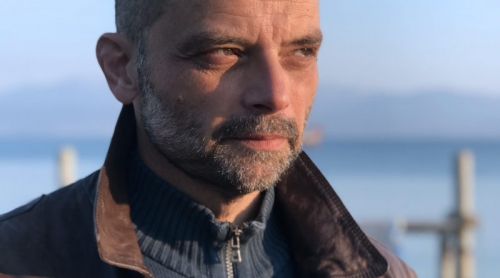
 Nous avons observé un phénomène d’ampleur équivalente, mais de bien moindre intensité, avec la grippe A (H1N1). Au printemps 2009, j’avais repéré sur Agoravox les chroniques d’un pharmacologue français, Bernard Dugué, qui relevait les incohérences de la communication officielle — OMS comprise — sur cette épidémie naissante qui, déjà, promettait de faucher le quart de l’humanité. Si elle est si terrible, observait Dugué, pourquoi n’entreprend-on aucune des mesures connues et établies pour l’endiguer? De cette chronique, nous avons fait un livre. A la rentrée 2009, H1N1, la pandémie de la peur était l’unique ouvrage, sur les 38 titres consacrés à ce sujet dans l’édition française, à dédramatiser la pandémie. Pour ma part, j’étais intuitivement et rationnellement convaincu de l’issue et mon comportement libre, à l’époque, avait suscité des réactions d’une surprenante agressivité (mais qui, du moins, ne pouvaient encore s’adosser à un dispositif policier).
Nous avons observé un phénomène d’ampleur équivalente, mais de bien moindre intensité, avec la grippe A (H1N1). Au printemps 2009, j’avais repéré sur Agoravox les chroniques d’un pharmacologue français, Bernard Dugué, qui relevait les incohérences de la communication officielle — OMS comprise — sur cette épidémie naissante qui, déjà, promettait de faucher le quart de l’humanité. Si elle est si terrible, observait Dugué, pourquoi n’entreprend-on aucune des mesures connues et établies pour l’endiguer? De cette chronique, nous avons fait un livre. A la rentrée 2009, H1N1, la pandémie de la peur était l’unique ouvrage, sur les 38 titres consacrés à ce sujet dans l’édition française, à dédramatiser la pandémie. Pour ma part, j’étais intuitivement et rationnellement convaincu de l’issue et mon comportement libre, à l’époque, avait suscité des réactions d’une surprenante agressivité (mais qui, du moins, ne pouvaient encore s’adosser à un dispositif policier). Strategika — Cette pandémie précède-t-elle un effondrement économique et systémique?
Strategika — Cette pandémie précède-t-elle un effondrement économique et systémique?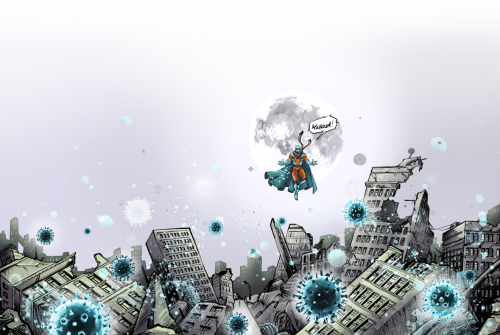







 del.icio.us
del.icio.us
 Digg
Digg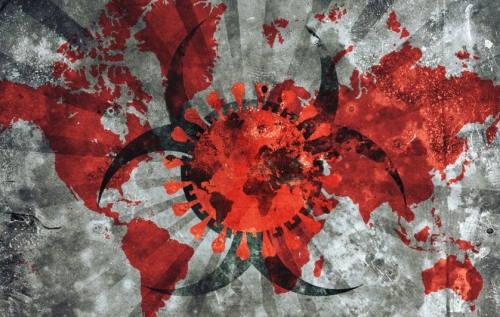










 Ce n’est pas faux, et ce ne sera ni la première fois, ni la dernière que nous remarquerons que Jacques Attali dit des choses intelligentes. Oui, la peur fait évoluer, mais dans quel sens ? Deux exemples : la peur de perdre la guerre a accéléré le massacre des Juifs par les nazis. La même peur (mais pas chez les mêmes) a amené, en 1941-42, Staline à redonner une place à la religion orthodoxe en Russie. La peur qu’a eu M. Macron face aux Gilets jaunes l’amène, en ce moment, à lancer une contre-révolution antisociale, et à édicter des mesures « provisoires », privatrices des libertés, dont l’expérience nous montre, avec les mesures antiterroristes, qu’elles finissent par être intégrées dans la loi ordinaire. Les restrictions provisoires des libertés sont, dans leur immense majorité, un pas vers des restrictions définitives : telle est la leçon des dernières décennies. Et il serait bon de s’en inquiéter.
Ce n’est pas faux, et ce ne sera ni la première fois, ni la dernière que nous remarquerons que Jacques Attali dit des choses intelligentes. Oui, la peur fait évoluer, mais dans quel sens ? Deux exemples : la peur de perdre la guerre a accéléré le massacre des Juifs par les nazis. La même peur (mais pas chez les mêmes) a amené, en 1941-42, Staline à redonner une place à la religion orthodoxe en Russie. La peur qu’a eu M. Macron face aux Gilets jaunes l’amène, en ce moment, à lancer une contre-révolution antisociale, et à édicter des mesures « provisoires », privatrices des libertés, dont l’expérience nous montre, avec les mesures antiterroristes, qu’elles finissent par être intégrées dans la loi ordinaire. Les restrictions provisoires des libertés sont, dans leur immense majorité, un pas vers des restrictions définitives : telle est la leçon des dernières décennies. Et il serait bon de s’en inquiéter.
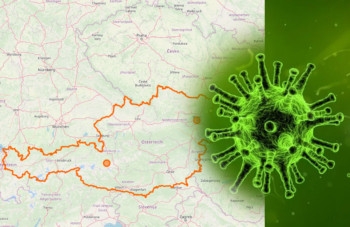 Wenn die österreichische Regierungsspitze, dabei sich selbst lobend, jetzt betont, man möchte keine Zustände wie in Italien, nun gut. Aber was läuft dort wirklich? Hören wir doch was die italienische Virologin Prof.Marita Rita Gismondo in einem dramatischen Appell an den Gesundheitsdienst ihres Landes uns verrät: „Ich rufe Sie dazu auf, keine Zahlen über Sars-CoV-2 Infizierte und Tote zu veröffentlichen. Diese Daten sind aus wissenschaftlicher Sicht falsch.“ So, und nur weil wir keine italienischen Zustände haben, sind die „Fakten“ unserer oder auch der deutschen Bundesregierung deshalb alle richtig? Da bekomme ich gleich einen Lachanfall, könnte aber auch gleich grantig werden, wenn ich an gewise Lobbyarbeiten dahinter denke, und richtig böse, wenn ich die die seelischen, sozialen und ökonomischen Folgen der Panikmache für abertausende Menschen vor mir sehe.
Wenn die österreichische Regierungsspitze, dabei sich selbst lobend, jetzt betont, man möchte keine Zustände wie in Italien, nun gut. Aber was läuft dort wirklich? Hören wir doch was die italienische Virologin Prof.Marita Rita Gismondo in einem dramatischen Appell an den Gesundheitsdienst ihres Landes uns verrät: „Ich rufe Sie dazu auf, keine Zahlen über Sars-CoV-2 Infizierte und Tote zu veröffentlichen. Diese Daten sind aus wissenschaftlicher Sicht falsch.“ So, und nur weil wir keine italienischen Zustände haben, sind die „Fakten“ unserer oder auch der deutschen Bundesregierung deshalb alle richtig? Da bekomme ich gleich einen Lachanfall, könnte aber auch gleich grantig werden, wenn ich an gewise Lobbyarbeiten dahinter denke, und richtig böse, wenn ich die die seelischen, sozialen und ökonomischen Folgen der Panikmache für abertausende Menschen vor mir sehe.


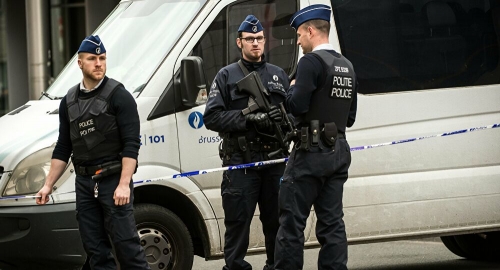
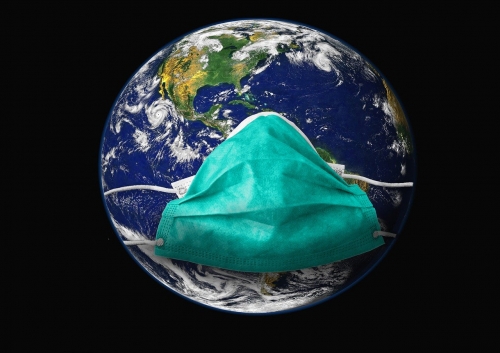

 Strategika –
Strategika – 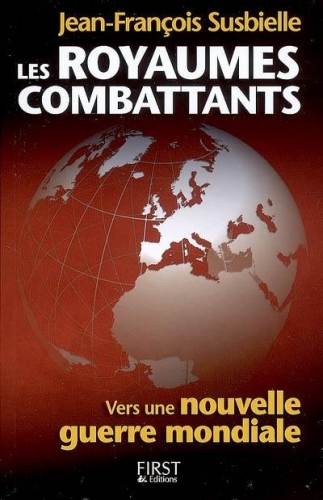 En Asie, le Japon, Taiwan, Singapour ou la Corée ont montré qu’il était possible de gérer la pandémie de manière différente et moins destructrice en évitant d’éteindre le moteur de l’activité comme on le fait en France. L’Allemagne tente de suivre ce modèle.
En Asie, le Japon, Taiwan, Singapour ou la Corée ont montré qu’il était possible de gérer la pandémie de manière différente et moins destructrice en évitant d’éteindre le moteur de l’activité comme on le fait en France. L’Allemagne tente de suivre ce modèle.  Mais ce n’est pas tout ! Un cataclysme de cette ampleur représente une opportunité unique pour les nouveaux venus (je pense à la Chine) de rebattre les cartes au niveaux mondial et d’acquérir de la puissance au dépend des autres.
Mais ce n’est pas tout ! Un cataclysme de cette ampleur représente une opportunité unique pour les nouveaux venus (je pense à la Chine) de rebattre les cartes au niveaux mondial et d’acquérir de la puissance au dépend des autres. 

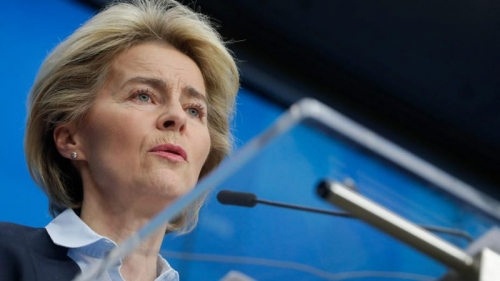

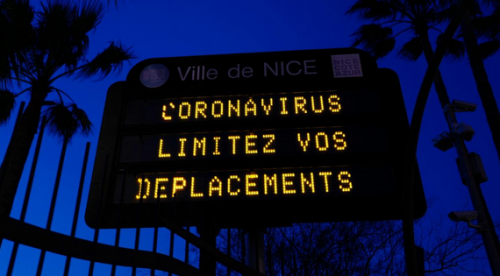


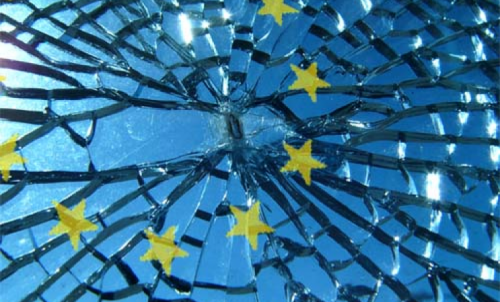


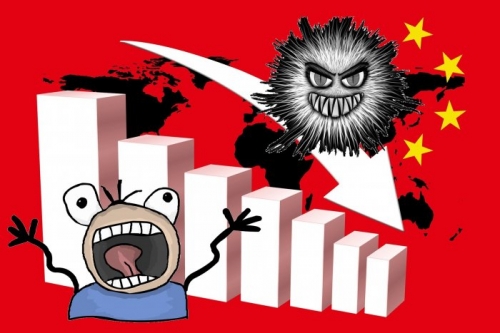

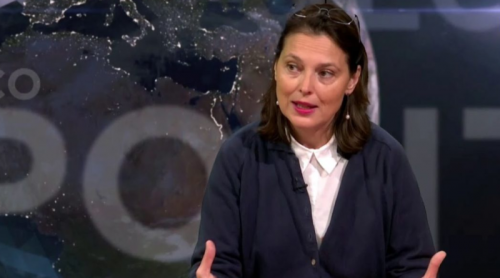
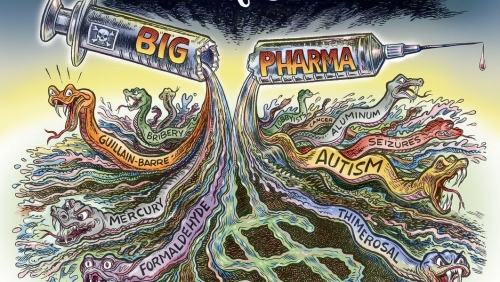




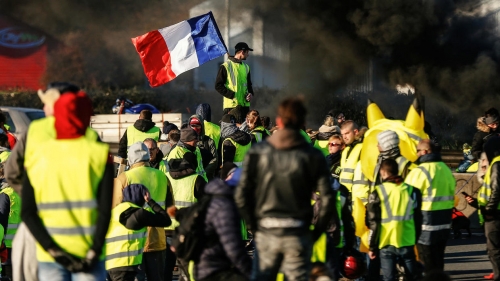


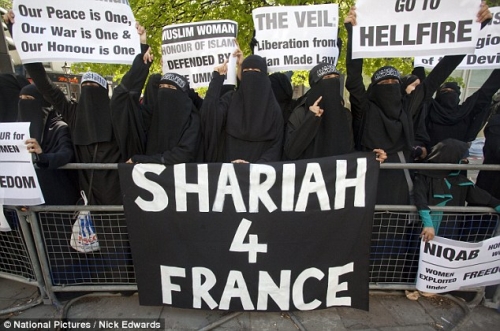

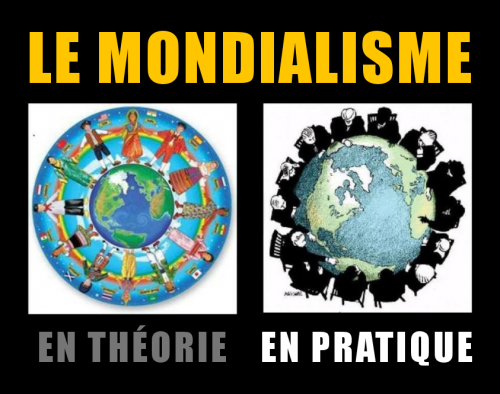




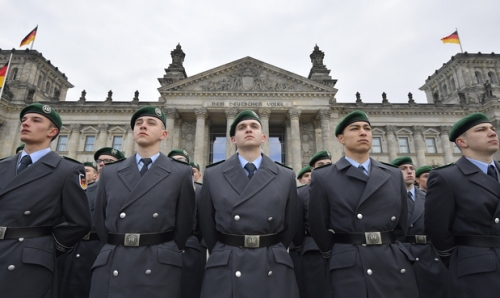

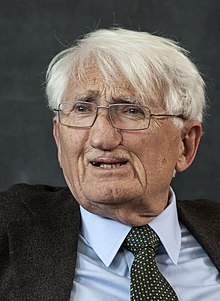 L'Allemagne vit la fin d'une longue période de stabilité politique, qui a eu pour piliers la Constitution et la démocratie et pour garants le consensus
L'Allemagne vit la fin d'une longue période de stabilité politique, qui a eu pour piliers la Constitution et la démocratie et pour garants le consensus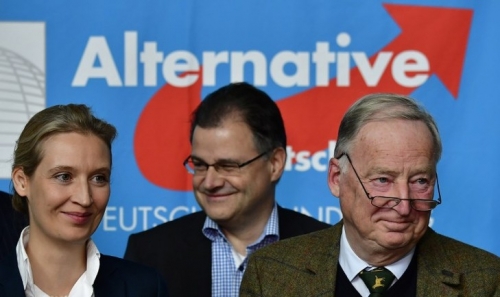
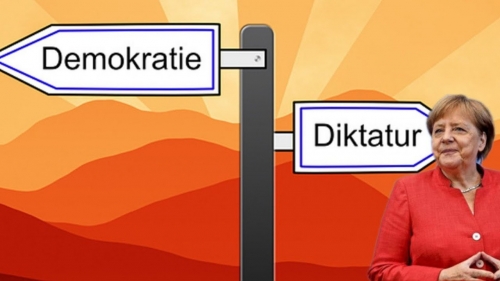
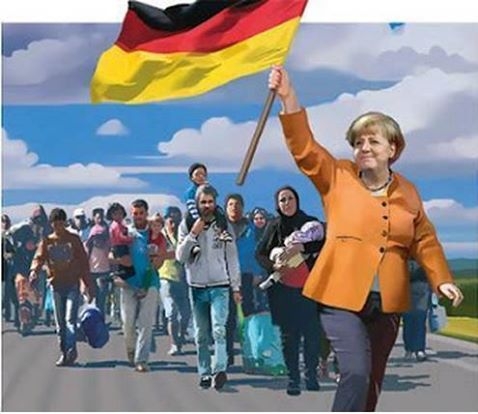


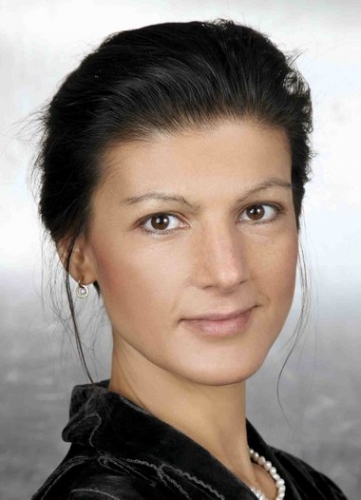 L'Allemagne et le néo-nationalisme de gauche
L'Allemagne et le néo-nationalisme de gauche 